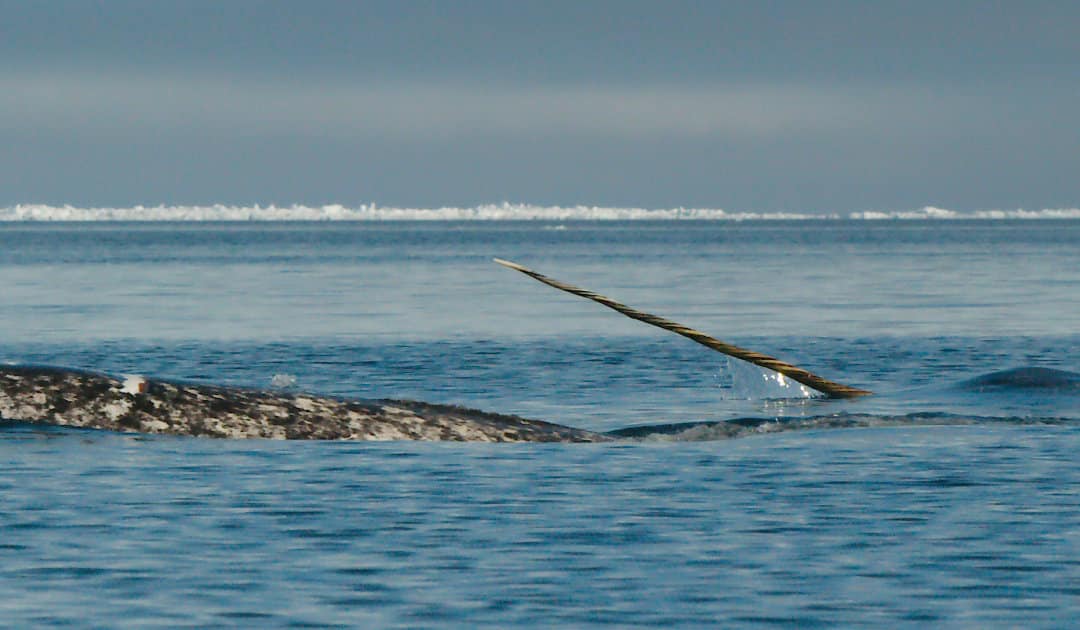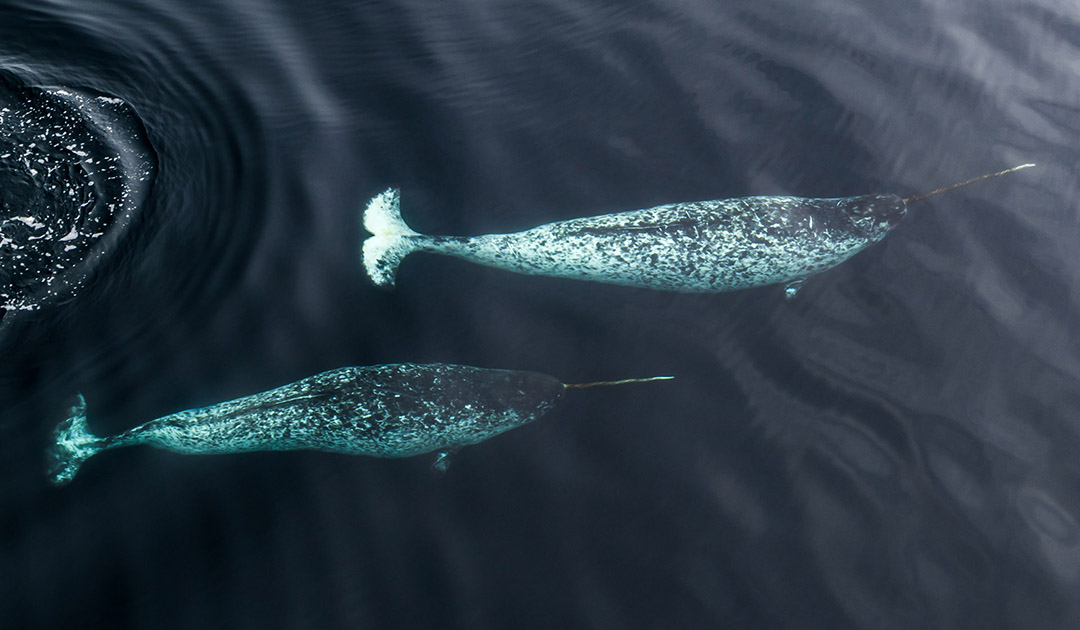
Narwhals – the “unicorns of the seas” – are good at eluding human gaze, making studying them a waiting game. But more knowledge about these rare species is essential to better protect the animals in the future. A lot of patience was also required by Russian researchers who launched the “Project Narwhal” in 2019 with the goal of learning more about the ecology of the whales in the Russian Arctic. This year, the scientists undertook the second expedition and returned at the end of June with encouraging results.
Narwhals are found in the Arctic Ocean, almost exclusively in the Atlantic sector from Canada and Greenland to Spitsbergen and the Russian archipelagos of Franz Josef Land and Novaya Zemlya. During the summer months, they stay in coastal, ice-free waters, and with the onset of winter, as soon as the sea freeze begins to freeze, they move north deep into the pack ice, where they stay along leads, temporary channels of open water, or holes.
The iconic animals are occasionally spotted in the Russian Arctic around Franz Josef Land and Novaya Zemlya, but it was not known whether the whales regularly visit certain waters. The “Narwhal Project,” organized by Russian oil company Gazprom Neft and implemented in 2019 in collaboration with the A.N. Severtsov Institute of Ecology and Evolution of the Russian Academy of Sciences, aims to shed light on the issue with a comprehensive study. This year, Gazprom Neft was supported by the Ministry of Natural Resources and Environment of the Russian Federation and the Northern Department of the Federal Service for Hydrometeorology and Environmental Monitoring. According to Gazprom Neft’s press release, the goals of the project are to assess the status of the narwhal population in the western Russian Arctic, determine the size and social structure of the groups, and develop an overall program to protect the species and its habitat.
During the first expedition in June 2019 aboard the research vessel “Mikhail Somov”, the research team discovered groups of up to 30 narwhals in the northern Franz Josef Land archipelago near Karl Alexander and Jackson Islands. Hoping to find the animals again in the same region, they headed straight for Jackson Island this year and were rewarded. They again observed narwhal groups of up to 30 individuals. As in 2019, there were also juveniles among the narwhals. Based on their observations, the scientists came to the first conclusion that the narwhals regularly seasonally stay in this area and also give birth to their young there. They were also able to support the hypothesis of the coexistence of narwhals and beluga whales for the first time based on video recordings.
“The lead-time for scientific fieldwork in Franz Josef Land was extremely tight. Nonetheless, we managed to encounter animals in the same place as we did in 2019 — near Jackson Island”, describes expedition leader Dr. Olga Shpak, biologist and researcher at the A.N. Severtsov Institute of Ecology and Evolution. “That quick, on-the-ground decision to carry on looking for narwhals around the Northbrook Islands turned out to be the right one! We encountered narwhals, beluga whales, walruses, polar bears and bowhead whales in the bays around the southern tip of Zemlya Georga (Prince George Land) and the channel between the Mabel and Bell Islands. We’ve taken records, and collected as much material as possible. There’s a lot of work ahead in processing these observations — and absolute certainty that this research must go on.”
Gazprom Neft says it supports education, science and environmental projects, among others, as part of its “Home Towns” corporate social responsibility program. “The Arctic is a unique region in terms of its climatic conditions and natural environment — and a strategic region for Gazprom Neft. The company has, voluntarily, taken on additional commitments to protect the biodiversity of these little-explored areas. The Narwhal project includes a series of expeditions, ongoing research and educational pathways, and is bringing a number of institutional Arctic partners together. That approach is taking research into the narwhal to a new level. The second expedition under this project saw us not just undertaking planned scientific research, but also collecting an unprecedented volume of visual content on this unique Arctic animal,” says Mikhail Bergart, Head of the Narwhal Project at Gazprom Neft.
Julia Hager, PolarJournal
More on the subject:








